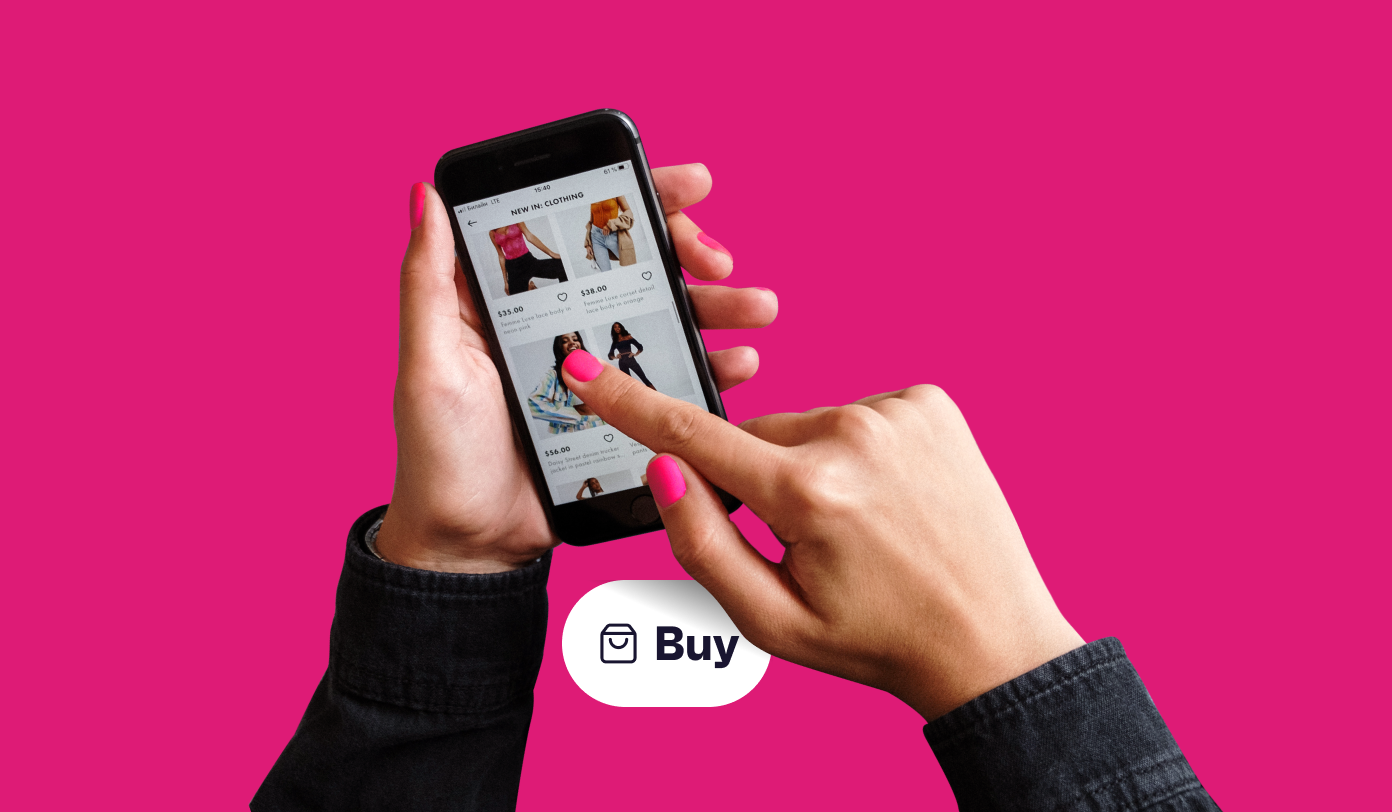Products don’t build brands, consumers do.
When it comes to branding, perception is everything – because what consumers think your brand to be, it is. This means understanding the ‘why’ behind their actions is key.
There are several ways to tap into consumer perceptions, but every single one is a testament to how well you know your audience. Leading brands are using sophisticated data to quantify behaviors and perceptions and give consumers more of what they want.
But what role does consumer psychology have to play? Here, we analyze the psychology tactics that matter most, and why.
7 Consumer Psychology Tactics that Influence Behaviors
1. Reciprocity
Reciprocity is a concept developed from the basic idea: If you give me something of value, I’ll give you something in return.
While a simple notion in theory, it’s one steeped in research with proven results. In 2002, a team of researchers found that waiters could significantly increase the size of their tips using this tactic.
Brands have since been applying the theory across their marketing as a means of increasing everything from brand loyalty to sales.
Making it Work
A powerful way to put the reciprocity principle into practice is through content marketing – offering consumers valuable content including educational tips and thought leadership. This is an ideal way to build brand trust and increase conversions, asking consumers to follow, believe in, and purchase from your brand in return.
Another way to put this tactic to the test is through rewards – giving consumers something to urge them along the path to purchase. Our latest e-commerce report shows that free delivery and financial incentives or rewards such as coupons and discounts are the top purchase drivers among today’s consumers, making these essential tactics no brand can afford to ignore.
2. Commitment & Consistency
Being consistent means developing a brand identity that people can relate to, and sticking to it.
Not only do consumers trust brands they recognize, they like brands that demonstrate commitment – reflecting our tendency to judge others by their actions, and our somewhat obsessive need for consistency.
Putting this into practice doesn’t just mean getting consumers to buy into your brand and boosting sales, it means urging your customers to make a commitment to your brand, encouraging consistent patterns of behavior.
Making it Work
When you choose a social cause to align with and commit to, you ask your audience to believe in your consistent dedication to this cause. This means positioning your brand in a certain way so that consumers perceive you as an advocate for change, taking a stand for something bigger.
When you ask consumers to subscribe to your blog, you make a commitment to your audience to deliver high quality, valuable content on a consistent basis. In return, you ask your consumers to make a small commitment (providing data, for example). Following this theory, this small commitment should urge them to continue doing so.
3. Authenticity
Brand authenticity is a concept that continues to gain importance, and for good reason.
For today’s consumers, brands are not only there to reduce risk when it comes to buying, they’re there to shape and validate our self-perceptions.
Brands now form a key part of our identity and our image in a world where everyone has a brand – whether personal or commercial.
For this reason, people are no longer buying the hype; if it feels fake, they don’t want it. And with more ways than ever to put a brand in the spotlight for the wrong reasons, keeping it real is essential.
Making It Work
Putting brand truth into practice means speaking to your audience, not as consumers, but as people. As David Ogilvy famously stated: “The consumer isn’t a moron. She is your wife.”
The best examples of authentic marketing use insights to frame their brand around their audience, giving them something to connect with and relate to.
User-Generated Content (UGC) is a great tactic to use, encouraging consumers to get involved in, and shape, your campaigns.
One example of a brand getting this right is Coca-Cola through their ‘Share a Coke’ campaign – urging consumers to use social media as a platform to share their ideas around what labels they want to see, resulting in one of the longest-running UGC campaigns of all time.
4. Personalization
According to a study from the University of Texas, our preference for personalized experiences comes down to two key factors: a desire for control and information overload.
Smart brands are tailoring their marketing to their consumers, making them feel more in control and helping them to bypass the sea of irrelevant information at their fingertips and get to what they actually value.
They’re doing this with the help of in-depth insights that help them quantify consumer behaviors and perceptions, resulting in personalized marketing and branding that speaks to them, and them alone.
Making It Work
Getting personalized means tailoring your marketing, your products and your services to your consumers.
We’ve previously explored the greatest examples of personalized marketing, and in every instance, their success comes back to how well they know their audience.
Once you have the data and insights you need to create a pen portrait of your consumer, you can start using what you know in much the same way. According to MarketingProfs, businesses that personalize web experiences see an average 19% increase in sales.
O2 is one brand that shows the value in personalization, who used data based on location and device to recommend the best tariff offer to consumers, resulting in a 128% increase in click-through rate.
5. The Psychology of Emotion
Every decision we make is based on emotion.
Studies have shown how, based on emotions, our brains decide what to share and who to trust, which makes sense based on the logic that we feel first, and think second.
In an analysis of the IPA Effectiveness Awards Databank, containing 1,400 case studies of successful advertising campaigns, those with purely emotion-based content performed almost twice as well (31% vs. 16%) as those with rational content. Put plainly, emotional marketing works.
Making It Work
Leading your marketing with emotion may sound straight-forward, but for this method to work, you need to know which emotions to tap into. This will depend on what you want to achieve with each campaign or content type.
Research by Jonah A. Berger, for example, found that the more positive the message, the more likely it is to go viral.
One example of a brand cleverly using emotion to drive its message is Nike. As part of its continuous effort to promote equality and diversity, these campaigns inspire people to take a stand for something worthwhile.
Appealing to their audience’s emotions with the help of a whole host of influencers, the brand expertly uses the tactic to position itself as a thought leader for change.
6. The Psychology of Color
The Psychology of Color as a persuasive tool has heeded much attention.
Research on the topic reveals up to 90% of snap judgements made about products can be made on color alone.
Red is a color largely synonymous with evoking strong emotions and encouraging impulse buying – one used by leading brands including Coca-Cola, McDonald’s and Virgin.
Making It Work
Brands are putting this into practice not only from a branding perspective to align with their tone of voice and shape their identity, but to optimize campaign effectiveness.
Testing the theory, HubSpot reveal they increased CTA clicks using the color red by 21%. By testing your campaigns and wider marketing activity with color to see what resonates best with your audience, you can see significant results driving more appeal.
Combining this tactic with hard data can open up new realms of understanding when it comes to your audience.
Understanding Consumer Psychology
Understanding consumer psychology is no longer a guessing game. Granular data now exists to tell you exactly what you need to know, and what you can tap into. Here are some of our latest statistics to help you get to grips with some of these key audiences.
- 20% more likely to fall into our “Image Conscious” attitudinal segment.
- More likely to buy from brands that ‘add value to their lives’.
Millennials
- 50% say that their favorite brand plays an integral part in their online lives
- When researching products, a third of millennials are turning to consumer opinions on social networks.
- Personal one-to-one connections with a brand is an important motivation for brand advocacy among this group.
- Free delivery is the most important factor in motivating mothers to complete a purchase.
- More than half of online mothers post reviews each month.
Vacation Buyers
- While 38% may cite online ads as a source of brand discovery, it’s a similar figure who are blocking ads on their main computer.
- 30% who have watched a video made by a brand have done so on a social platform.
- High-quality products are most likely to convert someone into a brand advocate.






.webp?width=495&height=317&name=pink_thumb_graphs%20(1).webp)
.webp?width=495&height=317&name=pink_thumb_letter%20(2).webp)
